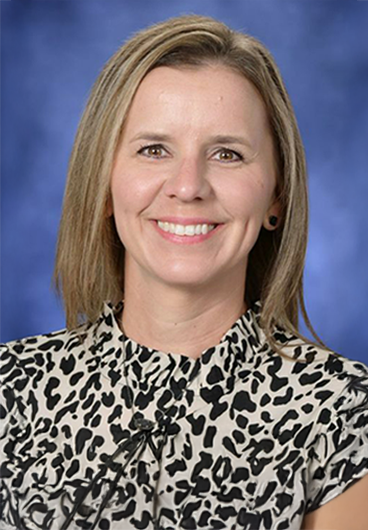
Lainey Hanna
Helena Park Elementary School
Nederland, Texas
LHanna@nederlandisd.org
Best Practices
1) Teacher and Staff Development: Creating a supportive and collaborative culture among educators is essential for fostering both teacher and student success. One effective strategy is a campus-wide teacher mentor-mentee program, which not only promotes professional growth but also strengthens relationships, boosts morale, and aids teacher retention, particularly for those in the early years of their careers. At our elementary school, we implemented this program and its success led to its expansion across the district. The mentor-mentee program was designed to support teachers at the early stages of their careers, creating a sustainable model for continuous professional development. We began selecting experienced teachers to serve as mentors, based on their expertise, communications skills, and desire to support their peers. These mentors were matched with new teachers at our school, fostering immediate connections and a sense of community. Communication was key to building strong mentor-mentee relationships. We structured regular meetings, ranging from weekly check-ins to monthly discussions, based on the needs of the mentees. These meetings focused on specific topics, such as classroom management, curriculum design, and student engagement. We also created checklists to guide these conversations, covering essential tasks like setting up gradebooks, requesting time off, and creating teaching goals. Casual, frequent interactions, such as mentors visiting mentees’ classrooms and offering feedback, also strengthened these relationships. A cornerstone of the program was feedback. We emphasized that feedback was a tool for growth, not judgment, end encouraged open, constructive dialogue. Mentors modeled reflective practice by discussing their own challenges, and mentees were encouraged to self-assess their teaching and identify areas for improvement. Mentees were encouraged visit other classrooms to see the implementation of curriculum on our campus and other campuses. The success of the program at our school was evident in the recognition of our campus teachers. For three consecutive years, one of our new campus teachers was selected for the “New Teacher of the Year” award out of all district first year teachers, and our nominated campus teacher of the year went on to win the district’s “Elementary Teacher of the Year” award for the last four consecutive years. The positive impact on teacher morale and retention led to the expansion of the mentor-mentee program across other elementary campuses in our district. Through structured meetings, checklists, and continuous feedback, the program created an environment where teachers could grow, collaborate, and build relationships with colleagues. Teachers felt more supported and confident, which translated into improved job satisfaction and student outcomes. As the program spread to other elementary campuses in our district, it helped reduce teacher turnover and fostered a culture of professional development and collaboration. Ultimately, the mentor-mentee program demonstrated that when teachers work together, share knowledge, and invest in each other’s growth, the entire school community benefits, leading to greater success for both educators and students.
2) Student Assessments: As a middle school teacher, I had the opportunity to collaborate with Dr. Andrea Ogonosky to revamp our district’s Response to Intervention (RtI) program. Our goal was to create a more data-driven approach that could effectively address the diverse academic needs of all students. After years of successful implementation, I am now proud to oversee this program as an assistant principal, where I’ve witness significant academic growth year after year, thanks to the program’s fidelity and consistency. The RtI program focuses on providing early interventions to students who struggle academically. When we first assessed the program. we found it lacked uniformity and coordination across the district. Our first step was to establish clear, research-based protocols for identifying struggling students and determining the appropriate interventions. This included adopting a single diagnostic tool across all campuses for consistency and creating a tiered system for intervention. We designed a multi-tiered structure with varying levels of support tailored to each student’s needs. An essential component of this redesign was ensuring that data collection and analysis guided both instructional decisions and the monitoring of student progress. With the new framework in place, we focused on professional development for teachers and staff to equip them with the tools and strategies needed for successful RtI implementation. Dr. Ogonosky, the Superintendent, and I led training sessions for campus administrators and team leads on identifying at-risk students, selective appropriate interventions, and using data to track progress. We also emphasized the importance of collaboration among teachers, interventionists, and administrators to ensure RtI became a shared responsibility across the school community. When I transitioned to my role as assistant principal, I assumed responsibility for overseeing the RtI program at the elementary level. A top priority was ensuring the program’s continued fidelity. I regularly meet with teachers and interventionists to review student data, assess the effectiveness of current interventions, and make adjustments as necessary. These check-ins also allow me to to reinforce best practices and ensure ongoing professional growth for all staff members. The results of these efforts have been remarkable. Year after year, academic growth across all grade levels has increased steadily. Students who once struggled to meet grade-level expectations are now making significant progress, with many closing the achievement gap. Our district’s STAAR scores have consistently outperformed state and regional averages, and Nederland ISD received and overall “A” rating within the past year. Teachers report greater confidence in using data to guide their instruction, and there is a stronger sense of teamwork and collaboration among staff. The success of our RtI program lies in its consistent implementation. By regularly monitoring student progress, providing targeted interventions, and fostering a collaborative school culture, we’ve created an environment where every student has the opportunity to succeed. The academic growth we’ve seen is a testament to the power of a well-structured and faithfully executed RtI program, and I am excited to continue leading this initiative into the future.


